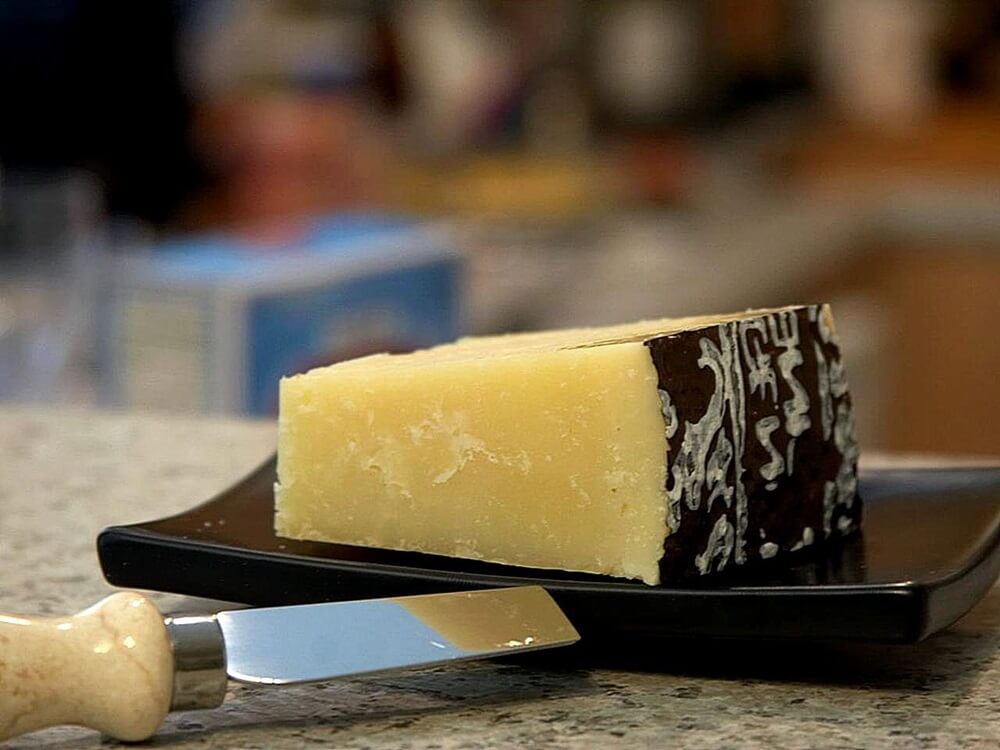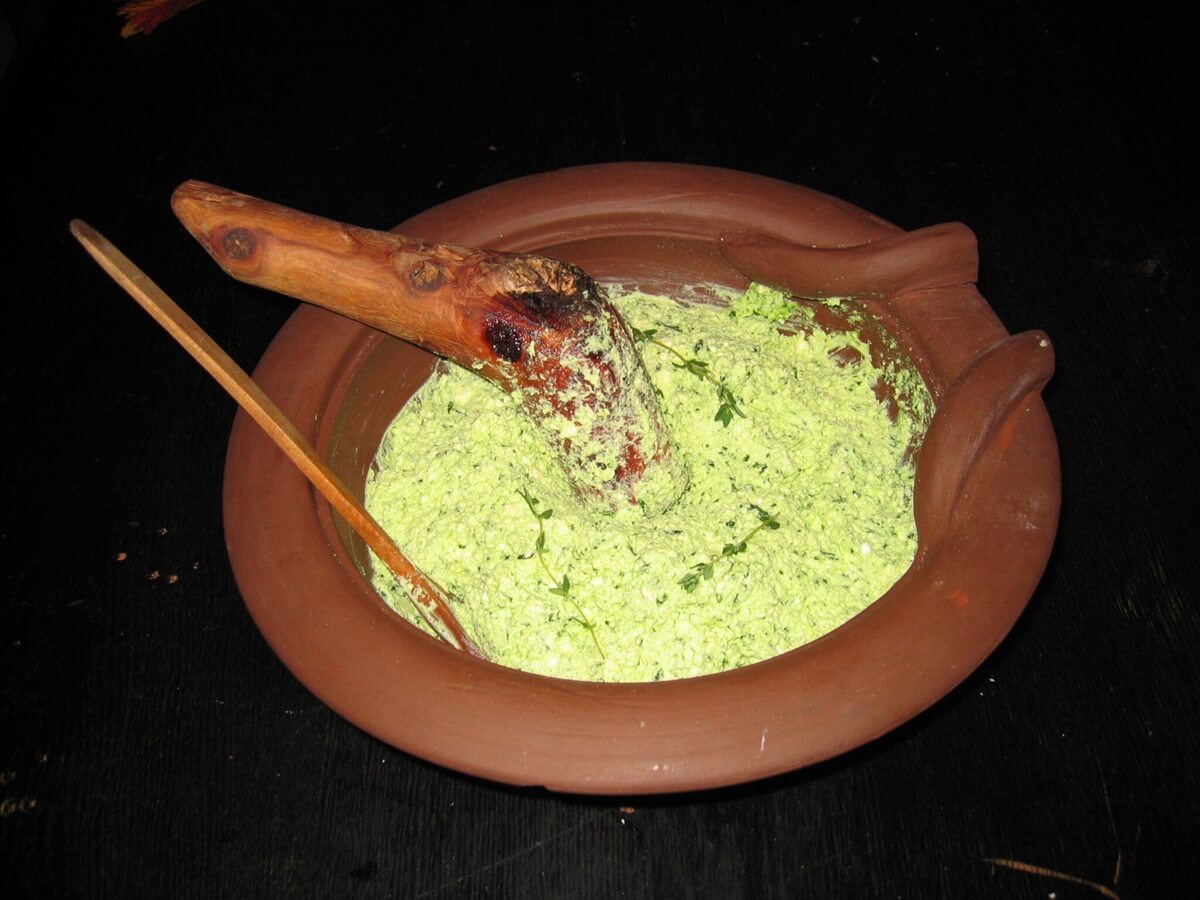A Staple Food Item
Cheese was a staple food in ancient Rome, and it was consumed by people of all classes, including soldiers as part of their food rations. Wealthy Romans were able to enjoy a variety of foreign cheeses, which were transported to Rome to satisfy their taste.

The Romans were known for their innovative techniques in cheese-making. They used different types of milk, including cow, goat and sheep milk to make a variety of cheeses. They also experimented with different aging processes, which resulted in the production of a wide range of cheeses of contrasting flavors.
Cheese in Religious Ceremonies
Cheese was not only a source of food for the ancient Romans, but it also played a significant role in their religious ceremonies. In fact, cheese was often used as an offering to the gods and was considered a sacred food item.
One example of cheese being used in religious ceremonies is the Apostolic Tradition, a third-century AD book of liturgical traditions attributed to Hippolytus of Rome, which mentions "cheese and olives" being used to celebrate the Eucharist. This suggests that cheese was considered a suitable offering in early Christian traditions.
Another instance of cheese being used in Roman religious rituals is a Libum, a type of ancient Roman cheesecake. Though this cake was sold and eaten by the common people of Rome, it appears to have been used in rituals, both domestic and public in nature. Cato the Elder, a Roman statesman, describes this cake as being given as an offering to the gods; either crumbled or as a whole placed on an altar and covered in leaves.
Furthermore, during the Feriae Latinae, a festival held in ancient Rome to honor Jupiter Latiaris, the ceremony was the initial responsibility of each newly chosen pair of Roman Consuls, who offered milk as a libation. The other cities participating in the festival sent cheese and sheep as offerings.
Cheese Production Techniques
Cheese production techniques used in ancient Rome were quite similar to those used today. The process involved the use of milk, curdling agents, salting, and aging.
Milk and Curdling Methods
The first step in cheese production is to obtain milk. As mentioned, in ancient Rome, milk was obtained from cows, sheep, and goats. The milk was then heated to a specific temperature, which varied depending on the type of cheese being produced. Once heated, a curdling agent was added to the milk. The curdling agent could be vinegar, sour milk, or animal rennet.
Rennet is an enzyme that is found in the stomach lining of young mammals. It is used to coagulate milk and is still used today in cheese production. In ancient Rome, animal rennet was used to curdle the milk. The curdling process occurred over a period of time, and the curdled milk was then cut into small pieces.
Salting and Aging Processes
Once the curdled milk had been cut into small pieces, it was then salted. The salt helped to preserve the cheese and also added flavor. After salting, the cheese was placed in a mold and pressed to remove any excess whey. The cheese was then left to age, which could take anywhere from a few days to two years. During the aging process, the cheese developed its characteristic flavor and texture.
In addition to salt, other ingredients were sometimes added to the cheese during the aging process. These ingredients included herbs, vinegar, and even wine. The acidity of the cheese was also important, and the level of acidity could be controlled by adjusting the temperature and humidity during the aging process.
Examples of Ancient Roman Cheeses
Fresh and Soft Cheeses
Fresh and soft cheeses were typically consumed shortly after production and had a high moisture content. They were usually mild in flavor and had a creamy texture.
Pliny the Elder's Naturalis Historia (Natural History) from 77 AD dedicated a chapter to the diversity of cheeses enjoyed by Romans of the early Empire. According to Pliny, the most highly regarded cheeses in Rome came from the province of Nemausus (present-day Nîmes, France) and the villages of Lesura and Gabalis, which might correspond to the modern-day regions of Lozère and Gévaudan. He emphasized that these cheeses were best consumed fresh, as their quality was short-lived.
"The kinds of cheese that are most esteemed at Rome, where the various good things of all nations are to be judged of by comparison, are those which come from the provinces of Nemausus, and more especially the villages there of Lesura and Gabalis; but its excellence is only very short-lived, and it must be eaten while it is fresh."_ Pliny the Elder
Some of the other more popular types of fresh and soft cheeses consumed by the ancient Romans included:
Caseus
Caseus, a type of smoked cheese, was a popular delicacy in ancient Rome. The recipe for this cheese can be found in the ancient Roman cookbook called De Agricultura (On Agriculture), written by Cato the Elder in the 2nd century BC. This cookbook provides valuable insights into the culinary practices and preferences of the ancient Romans, including their cheese-making techniques.
Caseus was made from goat's milk, which was a common source of milk in the Mediterranean region. The process of making Caseus involved curdling the milk, likely using rennet or another coagulant, and then separating the curds from the whey. The curds were then salted and pressed into molds to remove excess moisture and create the desired shape.
One of the distinctive features of Caseus was its smoky flavor, which was achieved by smoking the cheese over wood fires. This smoking process not only added flavor but also helped to preserve the cheese, allowing it to be stored for longer periods. The ancient Romans were known for their innovative food preservation techniques, and smoking was one of the methods they employed to extend the shelf life of their cheeses.
Although the exact details of how Caseus was consumed in ancient Rome are not completely known, it is reasonable to assume that it was enjoyed on its own as a snack or appetizer, or perhaps paired with bread, fruits, or wine as part of a meal. The versatility and distinct flavor profile of Caseus undoubtedly made it a cherished delicacy in ancient Roman cuisine.
Aged and Hard Cheeses
Aged and hard cheeses were typically consumed after a period of aging, which allowed them to develop a more complex flavor profile and a firmer texture.
Some of the more popular types of aged and hard cheeses consumed by the ancient Romans include:
Pecorino Romano
Pecorino Romano is a hard, salty cheese made with sheep's milk. It is one of Italy's oldest cheeses and is named after its main ingredient, pecora, which means "sheep" in Italian.
The production methods of Pecorino Romano have been described by Latin authors such as Varro and Pliny the Elder about 2,000 years ago. Its long-term storage capacity led to it being used for feeding Roman legions. A daily ration of about 27 grams (1 Roman ounce) was allotted to the legionaries in addition to bread and farro soup. The cheese gave strength and vigour since it was a high-energy food that was easy to digest.
Pecorino Romano is now produced exclusively from the milk of sheep raised in Sardinia (96% of production), Lazio, and Grosseto. The cheese must be made with lamb rennet from animals raised in the same production area and is consequently not suitable for vegetarians. Nowadays, most of the cheese is produced on the island of Sardinia.

A slice of Pecorino Romano cheese
The sharpness of Pecorino Romano depends on the period of maturation, which varies from five months for a table cheese to eight months or longer for a grating cheese. Most pecorino cheeses are classified as grana and are granular, hard and sharply flavored.
Pecorino Romano is often used on pasta dishes, just like the better-known Parmesan cheese. Its distinctive aromatic and pleasantly sharp, very salty flavor led to it being preferred for some Italian pasta dishes with highly flavored sauces, especially those of Roman and Lazio origin, such as bucatini all'amatriciana, spaghetti alla carbonara, pasta alla gricia, and spaghetti alla cacio e pepe (of which it is a main ingredient).
Conciato Romano
One of the most famous cheeses from ancient Rome was Conciato Romano, a hard cheese that was aged in amphorae and rubbed with olive oil and vinegar. Researchers have identified 76 distinct volatile compounds in Conciato Romano, which gives it a unique flavor and aroma.
Cultural and Dietary Role
Ancient Roman cheeses were often high in fat content and were prone to mold growth due to the lack of refrigeration. However, this did not deter the ancient Romans from consuming cheese regularly as it was an important source of protein and flavor in their diet.
Moretum was a popular dish in ancient Rome, particularly during the Late Republican and Early Imperial periods. The name "Moretum" roughly translates to "salad" in Latin, indicating that it was a dish primarily composed of vegetables and herbs. However, unlike modern salads, Moretum had a thick, paste-like consistency and was often used as a spread or dip.
One of the key ingredients in Moretum was cheese, typically Pecorino or a similar hard cheese. The cheese was combined with a variety of herbs and vegetables, such as savory, mint, rue, coriander, parsley, chives or green onion, lettuce leaves, rocket leaves, and fresh thyme.
These ingredients were ground together in a mortar until they formed a smooth paste. The inclusion of cheese not only added flavor and texture to the dish but also provided a source of protein, making Moretum a more substantial and nutritious meal component.

Self-photographed by User:Bullenwächter, CC BY-SA 3.0, via Wikimedia Commons
Moretum with a wooden pestle and rosemary twigs as decoration.
In addition to using cheese as a main ingredient in dishes like Moretum, the Romans also incorporated cheese into various sauces. One notable example is a sauce called "Hypotrimma," which showcases the Romans' creativity in combining different flavors and textures. Hypotrimma was a versatile sauce that featured cheese as a key ingredient, along with a mix of sweet, sour, and savory elements.
To prepare Hypotrimma, the Romans would start by pounding black pepper, lovage, and mint in a mortar. These herbs and spices provided a strong, aromatic base for the sauce. The next step involved adding cheese, likely a hard variety such as Pecorino, which would be ground together with the herb mixture. Honey and vinegar were then incorporated into the sauce, creating a balance of sweet and sour notes that complemented the richness of the cheese.
Contemporary Cheesemaking Influences
Ancient Roman cheese has had a significant impact on contemporary cheesemaking. Through the ages, cheesemakers have experimented with various cheese-making techniques and ingredients to create new and unique flavors. In recent times, the revival of ancient cheese-making techniques has led to the creation of new cheeses that are inspired by the flavors of ancient Rome.
For example, some cheesemakers have experimented with using ingredients that were commonly used by the Romans, such as honey, herbs, and spices, to create unique and flavorful cheeses. Others have revived ancient cheese-making techniques, such as the use of clay pots for aging cheese, to create cheeses with distinctive textures and flavors.
So, the next time you sink your teeth into a delicious artisanal cheese, remember to thank the ancient Romans for their tasty contribution to the world of cheese!



